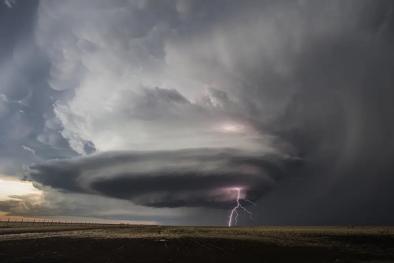Science Source
A review and analysis of possible changes to the climatology of tornadoes in the United States
- The spatial distribution and temporal clustering of tornadoes in the United States are changing.
- Tornado activity is increasing throughout the Southeast and in the southern portion of the Midwest and is decreasing throughout the southern and northwestern portions of the Great Plains and in the northern Midwest.
- This eastward shift is seen in tornado density maps, regional and gridded trends, and in an eastward shift of the mean center of tornadoes at the annual scale and in summer.
- The mean centers of tornado activity in other seasons are rather insensitive to these changes
- Tornadoes are also clustering on fewer days in the year, and days with few tornadoes are becoming less common whereas days with many tornadoes are becoming more common.
- These concurrent and opposing trends are subsequently altering the frequency distribution of tornado days.
- The seasonality of these big tornado days also appears to be changing, as their increase in frequency is greatest in the fall and winter.
- The increasing frequency of these big tornado days, which are most common in the Southeast and southern Midwest, contributes to the documented eastward shift in tornado activity.
Related Content
Headline

Mar 29, 2023 | Associated Press
Tornado-spawning storms may get worse due to warming
Headline

Apr 6, 2022 | Washington Post
2022 generated most March tornadoes on record in U.S.
Headline

Dec 16, 2021 | CNN
Climate change: How the crisis is affecting tornadoes
Headline

Dec 16, 2021 | The Washington Post
Historic wind storm slams central U.S., unleashes rare December tornadoes


